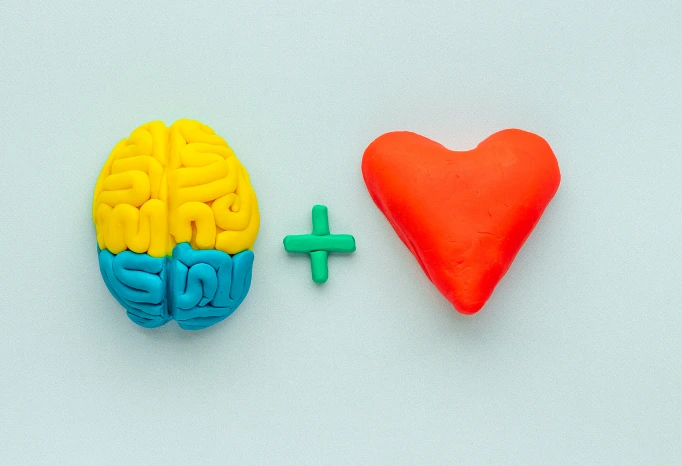Running a class means bringing the content to life, revealing it to the general public and making it accessible to a group of people impatient to discover it. How can you plan it and teach it so that this content is definitively accepted and integrated by the participants?
Ask yourself when preparing the class
Several questions may arise when preparing a class as a trainer.
At what point am I going to consider the class finished / a success? What message do I want to get through to the trainees? How can I deliver it so they can understand and even quickly integrate it? What educational treatment or what steps am I going to follow to successfully teach this class? What criteria and their respective indicators will enable me to know if the class has ‘disrupted’ and brought about a ‘step forward’ in the trainees? What ‘teaching method’ am I going to use to facilitate this class to ensure it is as suitable as possible given the content?
This last question concerns the choice of teaching method to use to facilitate a class and is therefore a key question to ask yourself to ensure your trainees progress. It requires in-depth thought and can sometimes seem like a satellite circling the content without ever coming into contact with it. It can sometimes prove a difficult and tedious task. Here is ‘one’ insight into this question to help you see things a bit more clearly.
The interests of choosing an appropriate teaching method for the course content
Considering the best teaching method to use first involves trying to identify the interests in using it. In effect, if you can make these explicit, it will be easier for the trainer to choose, as each time they come up with an idea for a teaching method, they will be able to directly compare their idea with the various interests and check whether or not they are taken into account before validating it. This approach makes for more efficient choices with regard to the teaching methods used, which in turn prove more appropriate for the course content. There are several interests at stake when choosing the right teaching method for your course content:
1. Reveal the very essence of the course content
The idea here is that the chosen teaching method will more or less reveal what makes the content of the course specific. The trainer can ask themselves the following question: ‘how is what I want to teach different from the content of another training course?’.
For example, for content highlighting the different nuances in interaction with the trainees. This training content is rather ‘delicate’ and requires a great deal of concentration to differentiate various manners of interaction, which can sometimes seem very close. Hence, the chosen method is ‘dynamic and fun’, i.e. involving movement and in the form of a ‘game’; it is ‘possible’ that the trainees are more focused on the form of the training, i.e. winning, rather than on the content. Consequently, it is possible that this form of teaching method covers up the very essence of the training content that the trainer wants to address.
This first interest can serve as a bearing for the trainer if they ask themselves the following question once they have found the teaching method: ‘will the teaching method I want to use really enable the trainees to pay attention and grasp the core content of the training?’
2. Give an overview of the training content as a whole
The choice of teaching method can contribute to the fact that the course content is covered in depth and not just in a superficial manner. In effect, it is important that the chosen teaching method cover the entire training content and avoids limiting its scope.
If, for example, the aim of the class is to deepen learners’ knowledge, in which the trainer is seeking to perfect their trainees’ reflections, the ‘period for reflection’ and the ‘form’ that this reflection will take will positively or negatively affect whether or not the final goal is achieved. If the period for reflection is too short and is collective, the trainees risk not having enough time to adequately develop their thoughts, on the one hand, and it is also possible that they ‘hide’ behind other trainees, on the other. This could risk limiting individual reflection as a result of the collective pooling of ideas, following this period of reflection given to the different groups.
This second interest can serve as a bearing for the trainer by asking the following question: ‘does the teaching method I want to use enable me to see the whole content of the course?’
3. Encourage content assimilation by the trainees
The nature of the content can influence the choice of teaching method, so that the trainees can assimilate it more easily. According to how we perceive the training content, the teaching method used may be different from trainer to trainer.
If, for example, the content addressed is linked to knowledge concerning the ‘legislation’ and the trainer considers that this content requires particular attention and concentration by the trainees, it may be useful to ensure that the manner in which the class is taught forces the trainees to pay particular attention. The teaching method may be such that in order to progress from one stage to another, the trainees must meet the requirements of stage 1 before being able to move on to stage 2, etc., like a treasure hunt.
Thanks to this teaching method, the trainees sense that the content relating to legislation must be taken seriously and that they need to pay attention when it comes to legislation. Hence, the ‘atmosphere’ of the work associated with the content, created by the trainer, acts as a bearing. The trainees may find is easier to assimilate knowledge concerning legislation from then on because thanks to the teaching method used, they will be able to ‘think legislation’ more easily and consider it as a way of thinking in and of itself.
This third interest can serve as a bearing for the training by asking the following question: ‘is the teaching method I want to use linked to the very nature of the training content addressed?’
Choosing a teaching method according to the content: what approach to take?
Given that the choice of teaching method has an impact on the trainer’s effectiveness in teaching the content of the course, how can you choose one that is relevant to its content? What approach can you take to choose a teaching method revealing the full value of the course content and facilitating its assimilation?
Step 1: determine the ‘theme’ of the class
First, the trainer decides on the theme of the training or class they have to teach.
Step 2: determine the ‘aim’ of the training content
Then, the trainer determines the precise aim of the class. The verb employed at the beginning of the aim is important, as it will directly affect the choice of teaching method. If, for example, the verb used is ‘to raise awareness’, the teaching method used will tend to make the trainees reflect for the first time on a subject: in practical terms, you could give the trainees some quotations, based on which they have to describe their thoughts and reactions. In this case, the trainer is ‘giving food for thought’ without going into the content in detail. If, on the other hand, the verb is ‘to deepen’, the teaching method used should perhaps allow certain nuances to emerge in order to enable the trainees to deepen their understanding. The trainer can even ‘play devil’s advocate’ to really deepen the trainees’ understanding of the content.
Step 3: determine the ‘type’ of content
To continue, the trainer must target the course content that they wish to pass on to their trainees. Being clear about the content (in the broad sense of the term) makes it possible to define the scope of knowledge to be addressed in the class. This is an important step as the teaching method used will differ depending on the amount and type of knowledge addressed. If there is a lot of content, it may be useful to use a teaching method composed of several short sections in which knowledge is transferred without in-depth research.
Step 4: determine the ‘type of teaching method’ for the course content
The trainer also needs to determine the type of teaching method they plan to use, by asking themselves the following questions: should I give the trainees time to think? Do I want them to react spontaneously as in brainstorming? Do I want them to use their real-life experience to address the course content? The trainer therefore chooses between a lecture-style teaching method, for example, or a method in which the trainees draw on their own experience.
Step 5: ‘choose the teaching method’ for the course content
Finally, the trainer must choose a teaching method that is either ‘dynamic’, ‘direct’ (questions and answers) or ‘indirect’ (pooling of trainees’ individual thoughts), ‘individual’, ‘group’ or ‘mixed’. The trainer’s choice of teaching method is definitive at this stage.
They may, for example, opt for a ‘dynamic’ method with successive ‘short bursts of work’. The trainer prepares a timeline containing the different stages of a typical day of classroom-based training and at each stage, they give out several words written on pieces of paper, some of which are correct and some of which are false. The trainees have to sort them and select only those that seem to correspond to this particular stage of the day. The exercise is repeated for each stage in this typical day. In this example, the trainees have the answers and do not have to find what needs to be done at a given moment of the day, only to identify what seems most logical to them.
This way of proceeding makes it possible to maintain the trainees’ attention despite the large amount of information they need to retain. Their attention is required several times but only for short bursts, which facilitates assimilation of the course content.
What does this look like in practice?
1. Theme of the class
The theme chosen for this example is ‘the attitude of the trainer’. The aim of this class is to invite the trainers to question their professional attitude when they are teaching a course. The title of this class could be as follows: ‘the trainer’s attitude when teaching a class’.
2. Aim of the class
The aim here is to ‘discover different approaches to training’ as a new trainer. The class will make new trainers aware of the different ways of teaching content.
3. Type of content of the class
The content addressed could be as follows:
– ‘top down’ approach: the trainer delivers the class in the style of a lecture and it is up to the trainees to understand and assimilate it. The trainer presents their ideas and seeks to convince the trainees through their arguments.
– ‘bottom up’ approach: the trainer uses trainees’ experience and examples from the field, based on which they come up with ideas to determine the content they want to teach. The trainer confronts the trainees with their obstacles, which may be their beliefs or emotional blocks, in order to overcome them.
– exploratory approach: the trainer proposes various content to the trainees (in video form, for example) and the trainees have to try to identify the content that the trainer wishes to address; the trainer thus guides the trainees’ attention by giving them an observation criteria.
4. Type of teaching method for the class
Given the aim of this class, targeting new trainers and consisting in ‘discovering different training approaches’, the best choice would seem to be to use an ‘exploratory approach’ as a teaching method. It the trainees have very little experience of training, the fact of having to observe and put into words the different approaches (which is the content of the class) may enable them to distinguish between them more clearly.
5. Choice of teaching method for the class
In practical terms, the trainer shows the trainees videos illustrating the different training approaches. After viewing the first video, the trainer asks the trainees to individually describe the manner in which the trainer in the video transmits the content. The trainer then proposes a second video and finally a third video, each illustrating a type of approach to training. After the time spent watching the videos, the trainer and trainees spend time discussing the videos and matching the type of approach observed (bottom up, top down and exploratory) to the right video.
With this teaching method, the trainees discover the different approaches as the names of the approaches are left to the discretion of the trainer at first. At the end of the class, the trainer reviews the discussions between trainer and trainees and names the different types of approaches that can be used to facilitate a class as a trainer.
It is important to take the course content into account, but is that all?
As we have seen throughout this article, choosing a teaching method that correlates to the content is a useful technique. It is, however, important to mitigate the impact of taking the content into account when choosing the teaching method by underlining the idea that the chosen teaching method also depends on other factors such as the ‘context of the circumstances’ in which the group of trainees find themselves and the ‘characteristics of the trainees themselves’.
If, for example, the teaching method, though well-suited to the content of the course, is based on a high degree of reflection on the part of the trainees and the trainees are, at that time, tired or not very receptive, then the context should be taken into consideration and it may be better for the trainer to use a more dynamic teaching method. The course content, the context and the trainees are therefore, in my opinion, three interdependent factors to be taken into account when choosing the most suitable teaching method to facilitate a class.
While it is essential for trainers to choose appropriate teaching methods to teach their classes, this part of the work of a trainer can be tedious and requires the trainers to have intricate knowledge of the content of the class in order to be able to make it ‘teachable’ and as accessible as possible for the trainees. Ultimately, thinking about the different stages of the class means thinking about how to support the trainees in integrating and assimilating the content their receive. While taking the course content into consideration in not sufficient in itself to establish a teaching method, it remains a key factor to increase the likelihood of success for the trainees and to ensure they leave the class satisfied and fulfilled.












